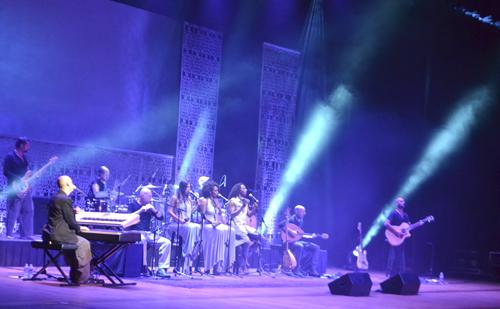
This post was written by Hatchet staff writer Margaret Kahn.
With a set of strings, pianos and multilingual performers, one musical group brought a bevy of cultures to D.C. Tuesday night.
The Idan Raichel Project’s global sound was on full display at Lisner Auditorium, where the hyped-up ten-piece band played to an energized crowd that was more than happy to stand up and dance.
Raichel, the Israeli ringleader of the ensemble, explained to the crowd that a demo session in his parents’ basement eventually expanded into a recording project with over 95 artists, though just the night’s ten-piece ensemble went on tour.
The vast array of musical styles represented in each song reflects the diverse cultures of immigrants to Israel — the ten-piece band represented birthplaces ranging from Rio de Janeiro to a refugee camp in Sudan.
The three lead singers were barefoot and dressed in flowing, toga-like cotton gowns. They sat perched on a line of stools, frequently rising to dance and even enter the crowd to get people moving. Throughout the set list, they effortlessly switched between Hebrew, Amharic, Arabic and Spanish.
The language barrier was transcended by moving pieces, like singer Maya Avraham’s performance of “Min Nhar Li Mshiti,” an Arabic ballad about losing a mother. The pain in Avraham’s voice as she uttered the universally-understood line “ya mama” resonated across the crowd.
One moment the audience was swaying to belly-dancing friendly tunes, and the next, the crowd was transported to a reggae-inspired Caribbean dance hall. The diverse nature of the Israeli immigrant experience was reflected throughout the night.




